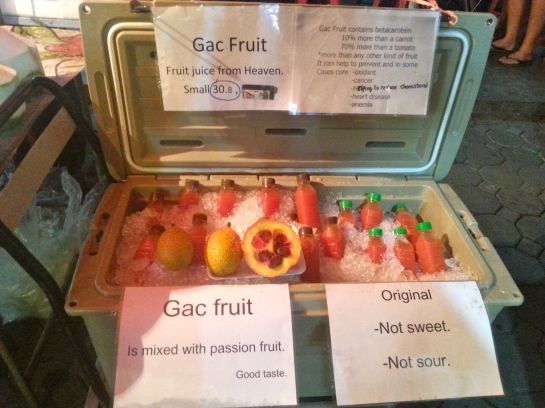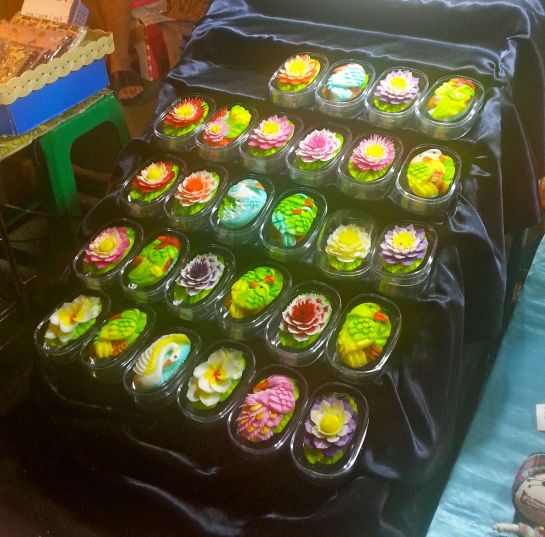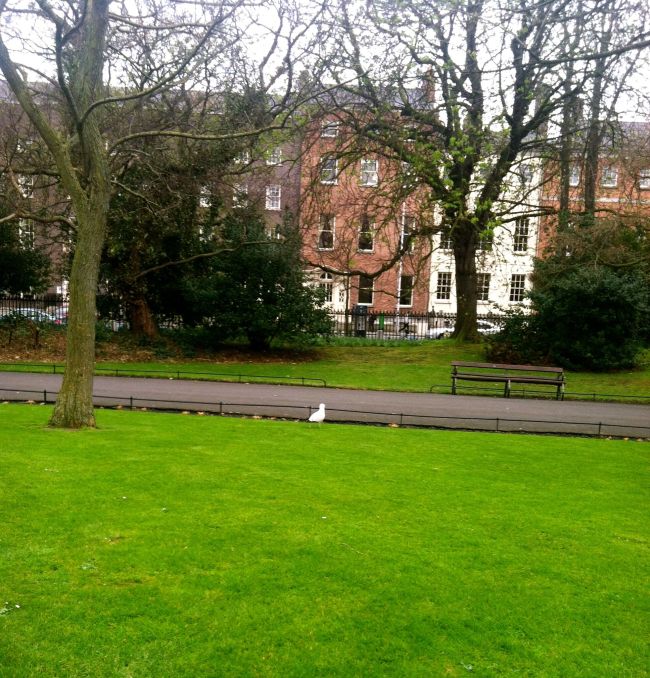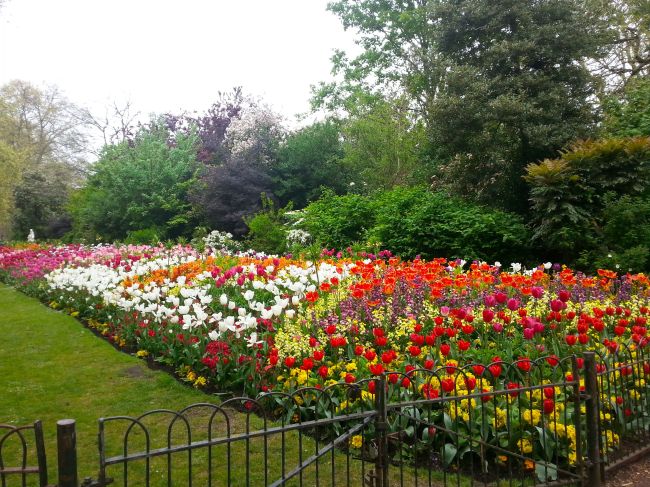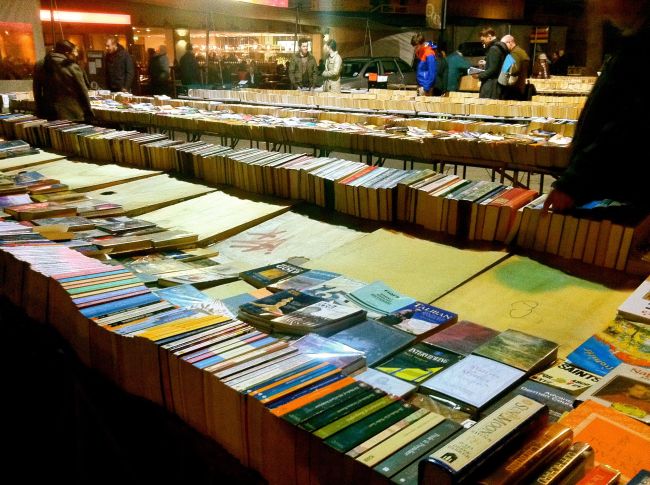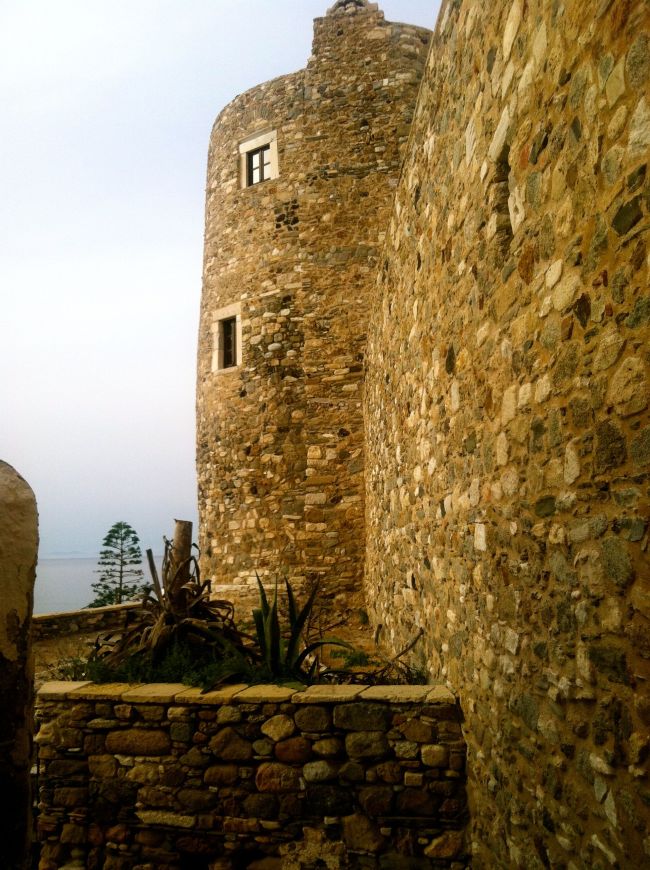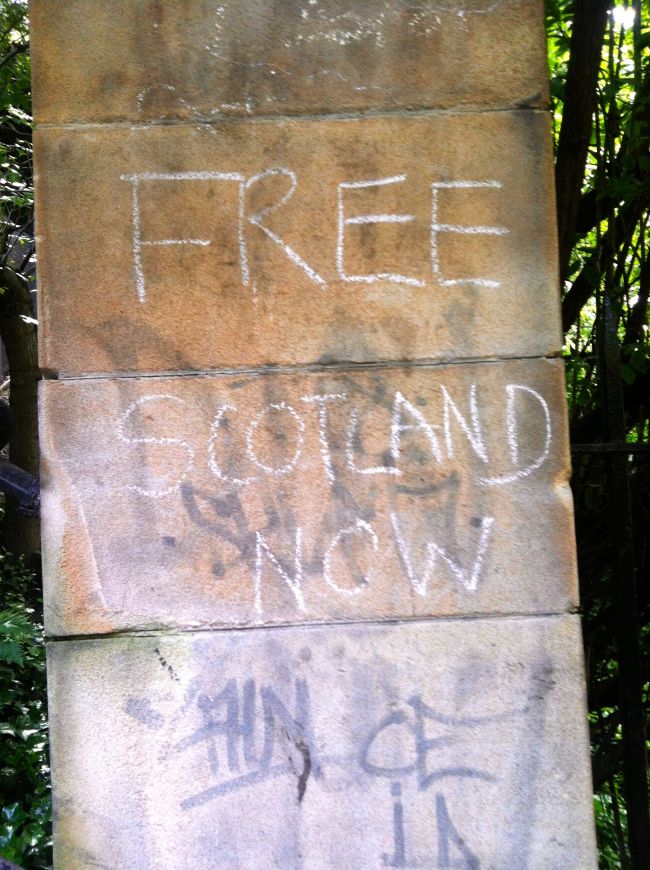I never believed in love at first sight until I arrived in Chiang Mai. This small city in Northern Thailand is a vibrant mix of oxymorons. It has a charming, old-world beauty, and it’s simultaneously run-down ugly. The atmosphere is both lively and relaxing at the same time. It’s gratifying. It’s frustrating. It can drive you insane sometimes. And sometimes it’s the best remedy for everything else going on in your life. No one can pinpoint exactly why they love Chiang Mai but one thing’s for sure, this city is an ex-pat and travel blogger Mecca for a reason. It’s also one of the top tourist destinations in the world and has quite a high ratio of returning travelers. I’ve met several American retirees who all said they’d rather spend their winters here than in Florida. It’s cheaper and far more interesting. A $30-a-day budget will ensure that you live like royalty and I can personally spend my days here doing nothing without ever really being bored. There always seems to be something going on. Thai people are wonderful and very friendly and, as a tourist, you never feel like you’re being harassed by vendors as you do in some other countries.
History and Politics:
Chiang Mai (meaning “new city”) was the historical capital of the Lanna Kingdom (1296-1768) and later a tributary of the Kingdom of Chiang Mai (1774-1939), in what is today northern Thailand. It officially joined Siam (the historical name for Thailand) in 1775 after an agreement with the Siamese king who helped drive out the Burmese (a constant threat to the region). Today, it is the cultural capital of Northern Thailand, and in many ways, it is the Bangkok of the north.
The royal family figures very prominently in modern Thai culture, and the king is revered by most Thai people. You will see pictures of the king everywhere. Speaking out against the king is not acceptable etiquette.
Getting Here:
From Bangkok (and other Asia Pacific destinations), there are many cheap flights to Chiang Mai, with Air Asia and Nok Air probably being the cheapest. Buses and trains run regularly between the two cities (including overnight) but can take anywhere from 9-15 hours with trains always being slower. If you’re taking a bus, make sure to book a VIP bus through a reputable agent or at the bus station as there is an extreme hierarchy to the quality of buses in this country and it generally follows the rule “you get what you pay for.” 700 baht (about $22 US) is around what you should be paying at the lower end of the spectrum. Do not try to get a better deal unless you’re looking for an adventure. Anyone who offers you a better price is likely scamming you, so be careful and do your research before you hand over any money.
Getting Oriented:
The Old City of Chiang Mai rests inside a moat and is surrounded by a crumbling wall built in the 1200s. It is designed more or less on a grid with streets either going north to south or east to west so it’s relatively easy to figure out. Outside of the Old City walls is a whole ‘nother monster. It’s also mostly on a grid with some historic buildings but you’ll likely be spending most of your time in the city walls, with a few excursions to the night bazaar, a few temples, and the surrounding countryside (the jungle). Traffic here can be a menace so beware.
Getting Around:
Public transportation is almost non-existent inside the city. The Old City itself is quite compact but sidewalks can be lacking in many places (and by “lacking” I mean there are no sidewalks). Walking is generally doable but crossing streets can be tricky at times. The drivers are crazy and pedestrians never have the right of way. Bad combination. Even the ex-pats drive like maniacs here. They probably learned this from their Thai wives. I occasionally just pull a “New Yorker” and walk directly into the center of the street, giving the drivers the “death stare” in the hopes that I will intimidate them into stopping. Oddly enough, this actually works. I don’t recommend it but it may be your only hope for actually getting across the street. Remember, Thailand took the British side in the right vs. left side of the street driving debate so look right then left before crossing.
Taxis are another way to get around and are quite cheap. From the airport to the city costs 120 baht (about $3.70 US). There are also plenty of tuk-tuks (pedicabs) that you can hire that are a lot of fun.
For an authentic Thai experience, flag down one of the many red pick-up trucks called “song theaw.” You’ll be seated on a bench in the back of the pick-up with a bunch of strangers and an open doorway (there’s a roof but that’s all). You can get from one end of the city to the other for as low as 20 baht (60¢) or you can hire it out for the day to take you to some nearby tourist attractions – 600 baht ($18) for half a day up to 1,000 baht ($30) for the whole day.
Temples:
Chiang Mai has enough temples to make you dizzy. There are over 300 Buddhist temples – an overwhelming variety to choose from – and many of them are worth the time to explore. Favorite temples are in the eye of the beholder and people tend to have different criteria for ranking them. If you’re only here for a few days, there are two that you shouldn’t miss: Wat Phra Doi Suthep and Wat Chedi Luang (“wat” means temple in Thai, “chedi” means stupa, and “doi” means mountain). Before you go, you should read up on different Buddhist temple styles in the region, as you will have a much deeper appreciation for what you are seeing. Typical Thai Buddhist architecture incorporates a lot of gold – golden roofs, pagodas (stupas), bells, and Buddhas. There are also intricate geometric details and specific animal themes such as dragons, elephants, etc. Each has its own symbolism. Either way, the temples are mind-bogglingly beautiful so you will enjoy them even if you don’t understand the meaning behind everything.
Doi Suthep is a mountain about 40 minutes outside the city. It includes the temple, a national park, the royal family’s winter palace (Bhubing Palace), and the Hmong hill tribe people. If you have time to visit all of them, you should. Doi Suthep has been a Buddhist place of worship dating back to 1383. The temple complex is quite large and you will need to spend at least 45 minutes to an hour in order to see it properly. There are 300 steps to climb to the top (don’t let this deter you – the climb wasn’t bad at all) but there is also a cable car for the lazier among us (it costs 30 baht or about $1 US and you will probably have to wait in a long line). Admission to the temple itself costs 30 baht and includes a great view of Chiang Mai from a terrace at the rear of the temple. You can get to the temple by hiring one of the many red pickup trucks (song theaws) from anywhere in the city.
Wat Chedi Luang is in the middle of the city (it is literally almost the exact center of the Old City). The cool thing about this temple is it’s actually a massive pile of ruins – the remains of the original structure that collapsed after an earthquake in 1545. Somewhat resembling an Incan temple, you will need to climb up a flight of ancient stone steps where a giant golden Buddha awaits inside shielded by two dragons. You will probably do what most people do and that is take a 360 degree survey of the temple, snapping pictures at every angle because each one is even better than the last. While you’re there, be sure to check out the reclining Buddha in the smaller structure behind the Incan temple.
There are several buildings on the premises and it serves as a monk university. There’s also a “Monk Chat Club” where you can ask the monks any question you may have.
Other notable temples include Wat Chiang Man (the oldest temple in Chiang Mai), Wat Phra Singh (an impressive example of classic northern Thai architecture dating back to 1345), and Wat Pan Tao (right next door to Wat Chedi Luang and made entirely of wood). But as I said earlier, temples are in the eye of the beholder. Take some time to explore out-of-the-way temples as you’ll probably find something no one bothered to write about on Tripadvisor. I found a beautiful white temple, (somewhat resembling the white temple in Chiang Rai) called Wat Mahawan on the way to the night bazaar one evening. It’s literally hidden in plain sight on a busy road in between the Tha Phae Gate and Chang Klan Road. It’s not as beautiful as the one in Chiang Rai but definitely a pleasant surprise.
For a completely different experience, visit some of these temples at night. You may not be able to go inside the shrines but they’re much more serene after dark.
Remember that these temples are working temples. You will see monks walking around in their orange robes and you will see worshippers praying, meditating, lighting candles, burning incense, etc. You are requested to dress modestly (that means no shorts, cover your shoulders, that sort of thing) and remove your shoes before entering the shrine. Buddhist etiquette also forbids you from having your feet pointing towards the Buddha (so sit with your feet under you), or standing taller than the Buddha.
Markets:
Chiang Mai has some of the best markets in Thailand. You will find handmade goods here that are exclusive to this region from silk pashminas to knitted handbags to jewelery to northern Thai specialty cuisine. The night markets are ridiculously awesome and generally take up entire avenues, with the Sunday night market shutting down half the city. Vendors bring their children and pets to help out. But you won’t just find merchants selling their wares and delicious street food here, there will also be massage parlors set up, Thai dance performances, and rock concerts along the way. The illuminated temples are used as a backdrop for the markets with some temple yards participating in the fun as street food vendors set up shop alongside 700 year old Buddha statues. Speaking of street food, be sure to try everything from thai coffee, fruit shakes, and coconut juice, to spring rolls, pad thai, khao soi,and mango with sticky rice, to the more, shall we say interesting cuisine (fried bananas, goldfish shaped pancakes with fillings, they also have fried bugs but I don’t know if anyone actually orders these). Food is cheap so feel free to splurge. Even if you eat every hour, you’ll probably only be spending $10 US in total. Vegetarians are well catered for, but ask about fish sauce, which is used in many vegetarian dishes such as pad thai. The pineapples here are sweeter than the Hawaiian ones you’re used to so make sure to try those both in fruit and shake form.
The Night Bazaar (along Chang Klan Road) is on every night but it’s a bit more touristy and the prices are higher. The Sunday night market (Walking Street) extends from the Tha Phae Gate along Thonon Rachadamnoen Alley all the way to Wat Phra Singh, including many of the side streets along the route. You really should see this once. It’s huge! The entire city comes out to shop and traffic is brought to a standstill. At 6 PM sharp, the national anthem is played over the loudspeaker. Everyone stops what they’re doing, stands still, all the hustle and bustle comes to a halt, and aside from the singing, you can actually hear a pin drop. My personal favorite is actually the Saturday night market on Wua Lai (just south of the Chiang Mai Gate). For some reason, it’s not as well known as the other two so it’s mostly frequented by locals. This is a good thing. You’ll probably find better deals here and have a lot more fun people watching.
Hand woven skirts…
I really loved these carved soaps…
Day Trips:
Chiang Mai might be cheap but activities in the area can set you back budget-wise if you’re not careful. Due to the lack of public transportation options, you’re kind of stuck with whatever packaged tours are being offered. A typical day trip costs around 1,000 baht (about $31 US). As a general rule, the 2 or 3 day trips are a better value than the 1 day trips and the shorter trips can probably be done without an organized tour. I took an organized tour to Doi Suthep for 600 baht ($18 US) and immediately regretted it. It’s not that it was a bad tour, it’s just that I could have done it for a lot cheaper by hiring a song theaw. Plus, the experience would have been a lot more memorable. If you’re traveling with a friend or two, it’s almost always cheaper to hire a taxi or a tuk tuk to take you around. The Chiang Rai-Golden Triangle tours are a waste of time and money. For 900 baht, it’s not really much of a rip off, but considering that you can take the bus to Chiang Rai to see the white temple (Wat Rong Khun) for much cheaper, and that you don’t actually get to see much across the Burmese and Lao borders, it’s probably better off as a do-it-yourself tour. You can read up on the opium trade online if you’re interested in the history of the Golden Triangle. I also find the tribal village visits to be a bit lacking. You don’t get to experience much in an hour, especially when you’re being rushed from one activity to the next. But my main beef with the organized jungle trekking tours in this area is that they usually include an elephant ride through the jungle.
What’s wrong with riding an elephant through the jungle?
Many people come to Chiang Mai to ride elephants in the jungle but they don’t realize what actually goes on behind the scenes. Many of these elephants are captured in the wild, they are usually baby elephants ripped from their mothers who are sometimes killed in the process. The babies are then put through a training process called “phajaan” which is meant to “crush the elephant’s spirit” by using bullhooks which are metal hooks inserted into the sensitive skin of the elephant’s head, often until it bleeds. The bullhook is meant to cause pain and to induce the animal to behave in a certain way. Eventually the elephant becomes “submissive,” at which point, you can come along and ride it.
Many tourists are turned off when they witness the bullhook still being used to discipline the elephant while they are riding it. Others relate that they see the elephants chained up at night, not being able to move even when they’re not technically working. Some of these elephants look sad and depressed and that’s because they are exhausted. You are probably their 5th rider for the day and they’ve been doing the same routine every day for years. If they slow down for even one minute, they are immediately “disciplined.” I knew when I heard these stories that if I saw this with my own eyes even once, I would never want to come back to Thailand. But just because you don’t see it, doesn’t mean it doesn’t happen. The “elephant shows” that come with the ride allow you to watch the elephants do tricks like paint and play soccer. Elephants don’t paint or play soccer in the wild, so you can already imagine what sort of training they had to get them to this level. By giving these people your money, you are culpable in the elephant abuse that goes on by allowing it to continue.
On the other hand, there’s the other argument that elephants are in danger of becoming extinct and would be in a much more precarious situation if it weren’t for the tourism industry. A hundred years ago, elephants were used for logging. Today, they are either used for tourism purposes or left in the wild to die of hunger.
So what are you to do?
Well, there’s a third option. In recent years, several responsible elephant camps have sprung up. The Elephant Nature Camp was founded in 1996 by a Thai animal rights activist named Lek as a sanctuary and rescue center for abused elephants. Lek’s goal is to return all the elephants to their natural environment. Set in a beautiful northern Thailand retreat, amongst mountains and a river, the Elephant Nature Camp allows you to engage with the elephants without actually riding them. You can spend a day or two or even a week volunteering with the elephants. You will get soaked while you bathe them but it will be worth the experience. Further afield, in Lampang, you can visit the Elephant Conservation Center, which is under royal patronage. It has an elephant hospital and an elephant dung paper factory. There’s also Patara Elephant Park, which is a bit more expensive but has gotten great reviews. None of these options is particularly cheap (2,500 baht or $77 US being the going rate for a day at one of these places) but you can rest easy knowing that your money is going to a good place. If you like elephants, this is totally worth the splurge.
Elephant Nature Camp: http://www.elephantnaturepark.org/
Elephant Conservation Center (Lampang): http://www.thailandelephant.org/en/
Patara Elephant Park: http://www.pataraelephantfarm.com/
A Note on Thanglish:
You’ll notice a new dialect forming the minute you land. It’s what happens when Thai and English mix to form a third language, which I like to call “Thanglish.” I should warn you that you will be speaking this dialect by the time you leave.
When To Go:
Thailand doesn’t have a winter/summer but rather a wet/dry season. It’s better to go during dry season (December to February) as temperatures in Chiang Mai will be mild, meaning it will be nice and sunny during the day and cooler at night.





















